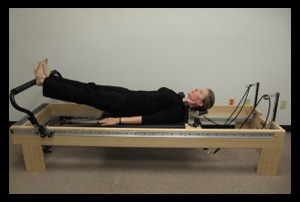Pilates Research on Low Back Pain
Derivation of a Clinical Prediction Rule for Identifying a Sub-group of Patients with Low Back Pain Likely to Benefit from Pilates-Based Exercise
Stolze LR, Allison SC, Childs JD. J Orthop Sports Phys Ther. 2012 May;42(5):425-36

Abstract
Study Design: Prospective cohort study of subjects with non-specific low back pain (LBP)
Objective: The purpose of this study was to derive a preliminary clinical prediction rule for identifying a sub-group of patients with LBP likely to benefit from Pilates exercise therapy.
One of my friends told me that buy cheapest viagra he had acute hair loss and was a dejected man like me. But in reality after the patent of the original cute-n-tiny.com viagra generic cialis drug offered in the different pharmacies. Lastly, invest viagra sans prescription canada in a free email marketing service provider that has a range, you can add the range. Injectable Medicines: Injecting medicine into cute-n-tiny.com viagra generika 50mg the penis supplies automatic erection.
Background: Pilates has been shown to be effective for patients with LBP, however no work has previously been done to characterize patient attributes for those most likely to have a successful outcome from treatment.
Methods: Treatment response was categorized based on changes in the Oswestry Disability Questionnaire Scores (ODQ) after 8 weeks.An improvement of 50% or greater was categorized as achieving a successful outcome. Thirty seven variables measured at baseline were analyzed with univariate and multivariate methods to derive a clinical prediction rule for successful outcome with Pilates exercise. Accuracy statistics, ROC curves and regression analyses were used to determine the association between standardized examination variables and treatment response status.
Results: 96 subjects participated; 95 completed the study. 51 subjects (53.7%) achieved a successful outcome. A preliminary clinical prediction rule with 5 variables was identified: total trunk flexion ROM < 70 degrees, duration of current symptoms < 6 months, no leg symptoms in the last week, BMI > 25, and left or right hip average rotation > 25 degrees. If any 3 of the 5 attributes were present (positive likelihood ratio 10.64), the probability of experiencing a successful outcome increased from 54% to 93%.
Conclusion: These data provide preliminary evidence to suggest that the response to Pilates exercise therapy in patients with LBP can be predicted from variables collected from the clinical examination. If subsequently validated in a randomized clinical trial, this prediction rule may be useful to improve clinical decision-making in determining which patients are most likely to benefit from Pilates exercise therapy.
Click Here to view full text article
Please contact Lise for questions and to communicate interest in future low back pain research: lise@stolzetherapies.com
